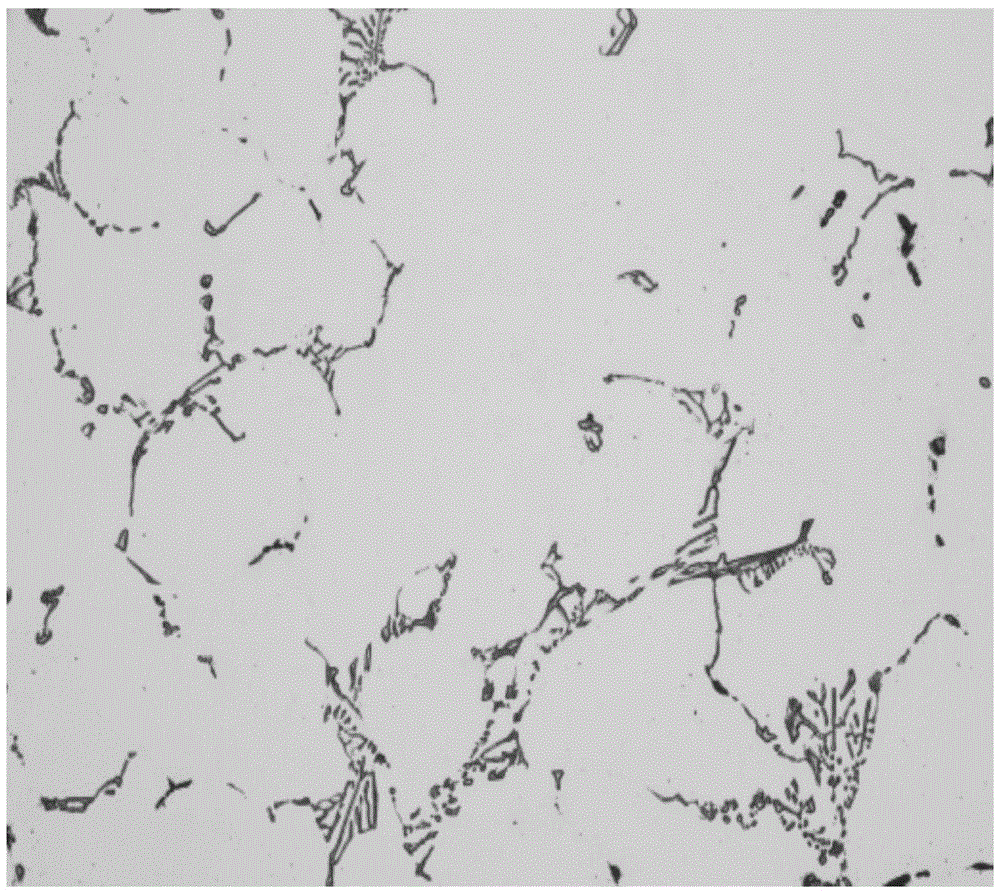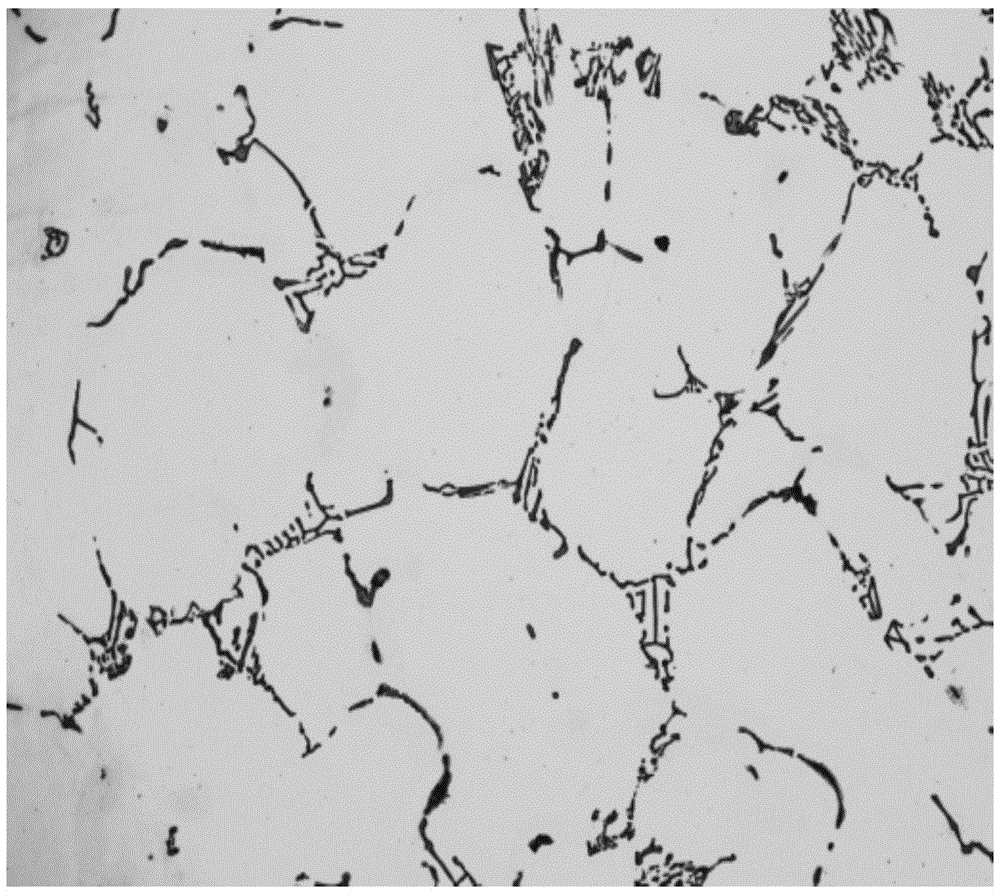High-frequency welded tube cast ingot and manufacturing method thereof
A technology of high-frequency welded pipe and manufacturing method, which is applied in the field of welded pipe ingot and its manufacture, which can solve the problems of poor corrosion resistance and low service life, and achieve the effects of ensuring surface quality, reducing cracked waste products, and shortening casting time
- Summary
- Abstract
- Description
- Claims
- Application Information
AI Technical Summary
Problems solved by technology
Method used
Image
Examples
specific Embodiment approach 1
[0014] Embodiment 1: A high-frequency welded pipe ingot according to this embodiment, the high-frequency welded pipe ingot is composed of 0.6% to 0.84% Si, 0.4% to 0.6% Fe, 0.40% to 0.70% Cu, 1.1 % ~ 1.4% Mn, 0.1% ~ 0.2% Ti and the balance of Al.
[0015] The effect of each element of this specific embodiment:
[0016] 1. Mn element:
[0017] Mn is the main alloying element in the aluminum alloy thin-walled high-frequency welded pipe for automobile radiators. With the increase of Mn content, the recrystallization temperature and strength of the alloy also increase. When the Mn content is higher than 1.6%, due to the formation of a large amount of brittle compound MnAl 6 , the alloy is easy to crack when deformed, so its content is controlled at 1.1% to 1.4%, which not only ensures the composition of the alloy, but also ensures its alloy performance. MnAl produced by Mn and Al 6 phase, its electrode potential is almost the same as that of aluminum, and it is a neutral me...
specific Embodiment approach 2
[0027] Specific embodiment 2: The difference between this embodiment and specific embodiment 1 is that the high-frequency welded pipe ingot is made of 0.74% Si, 0.45% Fe, 0.53% Cu, 1.24% Mn, 0.13% Ti and the balance of Al production. Others are the same as in the first embodiment.
specific Embodiment approach 3
[0028] Specific implementation mode three: The manufacturing method of a high-frequency welded pipe ingot described in this implementation mode is specifically carried out according to the following steps:
[0029] 1. Weighing: First, weigh 0.6% to 0.84% Si, 0.4% to 0.6% Fe, 0.40% to 0.70% Cu, 1.1% to 1.4% Mn, 0.1% to 0.2% Ti and the rest of Al according to the mass percentage Take pure aluminum ingots, aluminum-silicon master alloys, aluminum-iron master alloys, aluminum-manganese master alloys, aluminum-titanium master alloys and metal Cu;
[0030] 2. Preparation of alloy melt: first add pure aluminum ingots into the resistance reverberatory furnace, then add aluminum-silicon master alloy, aluminum-iron master alloy, aluminum-manganese master alloy and aluminum-titanium master alloy, and heat to a temperature of 660℃~700℃ At this time, metal Cu is added to the resistance reverberatory furnace to melt, and at a temperature of 700°C to 750°C, stir for 10min to 15min, and the...
PUM
 Login to View More
Login to View More Abstract
Description
Claims
Application Information
 Login to View More
Login to View More - R&D
- Intellectual Property
- Life Sciences
- Materials
- Tech Scout
- Unparalleled Data Quality
- Higher Quality Content
- 60% Fewer Hallucinations
Browse by: Latest US Patents, China's latest patents, Technical Efficacy Thesaurus, Application Domain, Technology Topic, Popular Technical Reports.
© 2025 PatSnap. All rights reserved.Legal|Privacy policy|Modern Slavery Act Transparency Statement|Sitemap|About US| Contact US: help@patsnap.com



